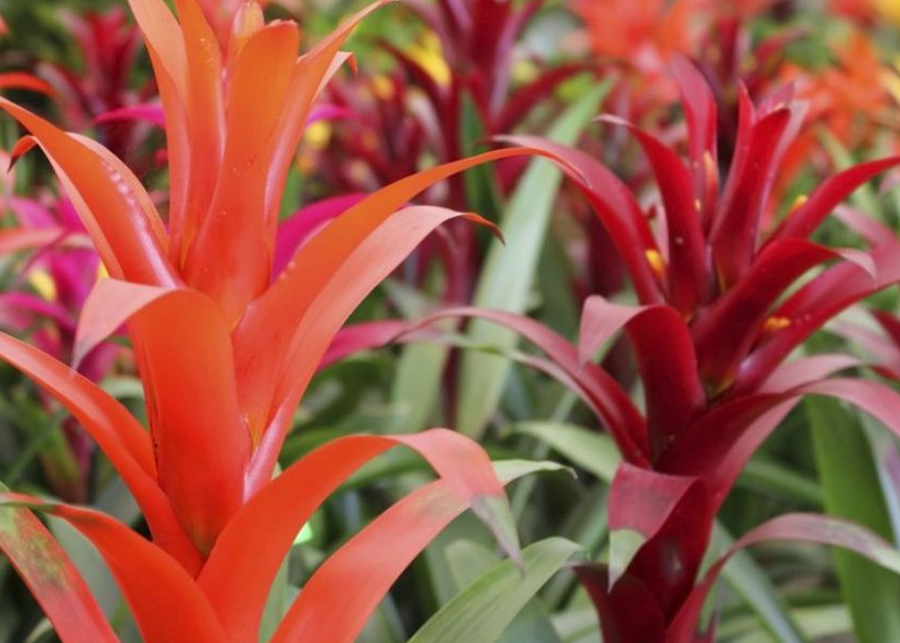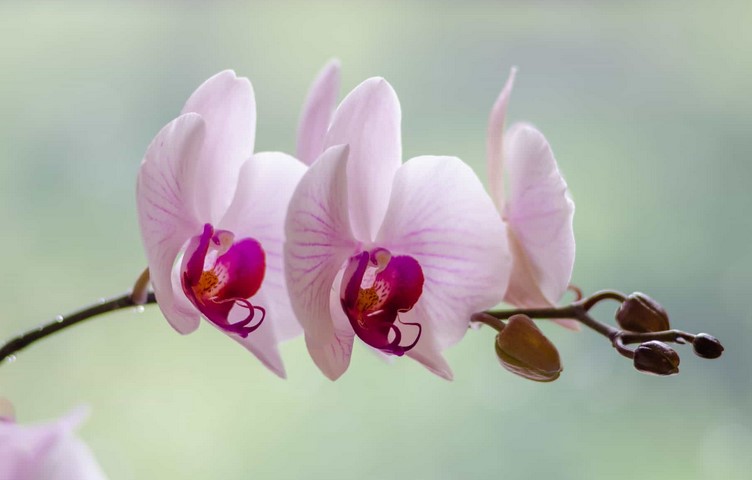If you are into growing indoor plants, especially bromeliads and other tropical plants, then you might have heard of Pitcairnia feliciana. This plant is usually referred to as the purplish blue Pitcairnia since most of its parts take that color. It can grow well in warm environments. However, if you live in a cold place and would like to have it at home then you’ve come to the right place.
The Bromeliad plant belongs to the family Bromeliaceae. It consists of 75 genera and approximately 3590 species. Most of them are native to the tropics and subtropics of North America, while several of them grow in tropical west Africa. Pitcairnia feliciana is a species that is native to tropical west Africa.

Bromeliad plant care
When caring for your bromeliad plant, there are a few important steps you should follow. First, remember that these plants are sensitive to copper and tap water chemicals. This means that you will want to use a plant -safe water source. Second, you will want to avoid over- watering your bromeliad by allowing the soil to dry out completely before watering it. Third, remove the mother plant from the pot to better access the growing pups.
If your bromeliad plant is dying, you should remove its leaves and any dead or dying flowers from its branches. You may notice brown flower bracts on the plant, which is a sign that the plant is about to die. This does not mean that it can’t be saved, but it does mean it will need to be removed from the pot. In some cases, you can find pups that have already emerged from the dead mother plant.
Growing a bromeliad
Bromeliads need a moist environment to thrive. They can survive indoors or outdoors, provided they are protected from direct sunlight. They prefer a relative humidity of 60% or higher. If you live in a dry climate, you may need to add more soil to the soil mixture.
Unlike many other plants, bromeliads are able to grow from pups. These are small plants that can be harvested once they have reached about 1/3 the size of their mother plant. Once they are large enough to be separated from their parent, they can be transplanted into pots. Generally, bromeliads purchased from stores won’t need to be replanted, but bromeliads that are grown from pups need to be replanted when they outgrow their original pot.
Bromeliads are native to the tropical Americas, and can be grown indoors or outdoors. The good news is that anyone can grow a Bromeliad. There are many types of bromeliads to choose from, including epiphytic plants, lithophytes, and terrestrial plants. Most Bromeliads grow well in a hanging container or a pot with drainage holes.
Propagate a bromeliad
There are several ways to propagate bromeliads. You can use cuttings, seeds, and roots. Propagation can take two to three years. It is also possible to grow bromeliads from pups. Regardless of how you decide to propagate your bromeliad, it is important to remember that the plant itself does the majority of the work.
Proper watering is essential for bromeliads. They like a moist soil and should be watered regularly. In addition, you should water them when they are halfway dry.
Some types of bromeliads have “tanks” in the center of the leaves that are filled with water. When watering bromeliads, you should flush this tank with water to provide the proper humidity levels.
The best way to propagate bromeliads is by using the pups from the parent plant. The pups are smaller than the original plant, so you should separate them as soon as they are about 1/3 the size of their parent. If you’re careful, you can keep the pups until they’re about a third of the size of the parent plant. Then, you can plant them in potting mix or soil. Once they’re large enough, they’ll need a lot of attention and care.

Watering a bromeliad
Watering a bromeliad is a simple process and can help your plant grow healthy and flourish. They are relatively low maintenance plants that can thrive both indoors and outdoors. Unlike most other plants, bromeliads can survive without constant replacement or pruning. You can use a variety of methods to water your bromeliad. The most common is to use a combination of a water hose and a garden hose. This combination provides even water pressure to your plants and helps you cut down on evaporation.
When watering a bromeliad, make sure the soil is well drained and is free of any standing water. If the soil is too wet, watering a bromeliad can lead to rot and other problems. In addition, bromeliads are sensitive to metal, so never place them in metal containers.
Misting a bromeliad
Misting a bromeliad once a week can keep it healthy and looking great. However, the timing is crucial. You want to ensure that the plant receives the right amount of water at the right time, otherwise it will die. Bromeliads grow in very different environments. Some prefer bright indirect light while others prefer dim indirect light.
Bromeliads usually have a cup located in the center of their leaves to catch moisture. To water them, fill the cups with distilled or rainwater and mist the leaves every few days. Make sure to change the water in these cups often to prevent bacterial growth.
Caring For Bromeliads Result
Remember, the Bromeliad plant is not hard to take care of. It needs sufficient sunlight, water, and a humid environment. You will also have to be consistent in giving it all these requirements or else you might lose this beautiful and exotic plant. This article should be able to give you enough information and guidance so that you can now treat your bromeliad better with the proper maintenance it needs.








